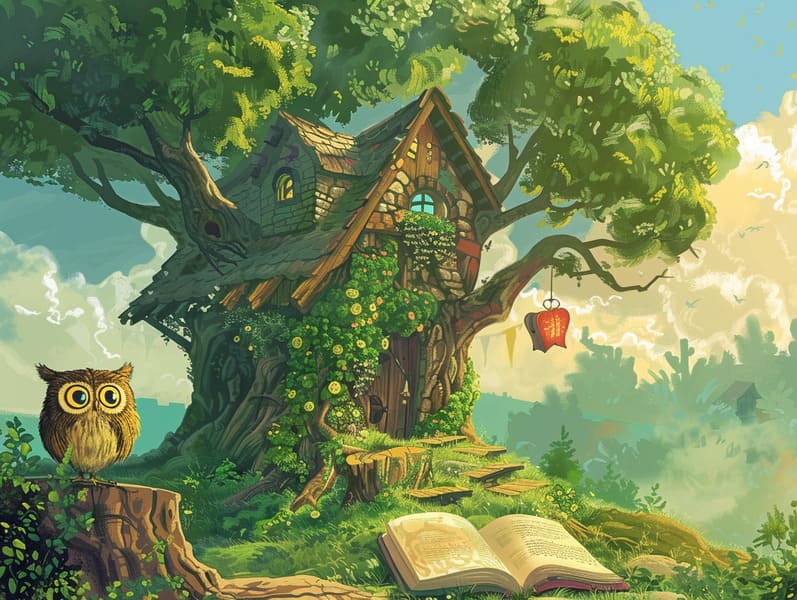The Genesis of Historical Fairy Tales and Their Lasting Magic.
The Genesis of Historical Fairy Tales and Their Lasting Magic.
Blog Article

Short fairy tales have old origins. These tales have been conveyed from one generation to the next millennia before they were ever written down. They came from a variety of traditions, including Asian traditions. They were initially transmitted among elders, often carrying themes and messages related to the societal norms and beliefs of the time.
The famous Grimm duo, the two Grimm brothers, were among the first to compile many of these beloved tales. Their anthology, "Grimm's Children's Stories," included classics like "The Little Glass Slipper," "Hansel and Grethel," and "Schneewittchen," which have since become essentials in the world of famous fairy tales. Similarly, the Danish author's magical stories, such as "The Little Mermaid," and "The Duckling's Story," have captivated hearts worldwide, cementing their place in the pantheon of classic fairy tales.
Despite being ancient, classic fairy tales remain as important as ever, especially as kids' bedtime tales. These enchanting tales are now available in diverse formats, including gorgeously illustrated books, whimsical animations, and free fairy tales online.
Their unwavering allure can be connected to several charming aspects:
Moral Lessons: Classic fairy tales often convey important moral lessons. Stories like "The Wolf and the Liar" teach the virtue of being truthful, while "The Hare and the Tortoise" highlight the virtues of determination and meekness. These stories offer the young clear distinctions between truth and falsehood, developing their moral compass in a kind yet meaningful way.
Sympathy and Perception: Timeless fairy tales frequently include heroines facing problems and hurdles, inciting audiences to empathize with their struggles and applaud their triumphs. For instance, "The Tale of Beauty and the Beast" shows us the significance of valuing inner qualities to acknowledge the true nature of a person, encouraging compassion and recognition.
Cultural Appreciation: Many traditional fairy tales are interwoven with the cultural contexts from which they arose. Learning from these narratives can provide informative snapshots into different historical contexts, building a sense of world understanding and understanding.
Inventiveness and Fantasy: The fantastical elements in classic fairy tales—spells and potions—promote children’s dreams. These narratives move readers to fantastical realms, unleashing creative dreams and a sense of fascination that endures a lifetime.
Traditional fairy tales are not only captivating but also illuminating. They serve as captivating tools in nurturing various thinking and feeling skills in young ones. When ancient fairy tales are spoken out loud, they strengthen language skills by presenting new linguistic elements and elaborate sentence structures. This practice also nurtures hearing perception and mindfulness, as kids pay close attention, excited to see what happens next.
Furthermore, analyzing the themes and characters of old fairy tales can foster critical thinking and evaluative skills. Young readers are taught to identify patterns, anticipate outcomes, and figure out cause and effect. These talks also facilitate young readers say their thoughts and feelings, contributing to their emotional intelligence.
In today’s high-tech era, the accessibility of online fairy tales has made these stories more reachable than ever. Digital sites and programs provide vast collections of popular fairy tales that can be perused or heard anytime, anywhere. Fairy tales spoken are particularly in demand, offering an engaging way for children to experience these enchanting tales. Audiobooks and read-aloud videos move characters and settings to life, often augmented by charming musical scores and musical scores that amplify the narrative adventure.
The lasting allure of classic fairy tales lies in their ability to adjust to present eras while sustaining their basic principles. Contemporary retellings of these fairy tales often integrate more multicultural figures and modern settings, making them familiar to today’s audience. However, the fundamental themes of fortitude, benevolence, and rightness remain unchanged, continuing to reach readers of all ages.
Old fairy tales also offer a sense of solace and recognition. They afford a structured narrative with a plain beginning, middle, and end, often winding up with the finalization of conflicts and the triumph of goodness over badness. This reliability can be encouraging for young readers, offering a sense of sturdiness in an constantly changing world.
Timeless fairy tales continue to enchant and educate new generations, maintaining their attraction and significance in modern society. As kids' bedtime tales, they present a perfect blend of allure and teaching, enriching moral values, empathy, and creativity. The accessibility of free fairy tales online these guys and the popularity of fairy tales recited promise that these ancient stories remain within reach to new generations.
By preserving and broadcasting these fairy tales, we continue to commemorate the rich tapestry of myths and cultural heritage. Whether you are reading a gorgeously illustrated book, exploring a digital collection, or listening via an read-aloud story, the delight of popular fairy tales is always within reach. These tales teach us of the invariable nature of storytelling and its ability to bring us together across centuries and lands.
No matter if you are perusing a artistically illustrated book, discovering a web collection, or listening through an voice book, the attraction of ancient fairy tales is always within reach.
These tales illustrate of the invariable presence of narratives and its ability to hold us together across generations and cultures, making a tie that enchants and educates alike.